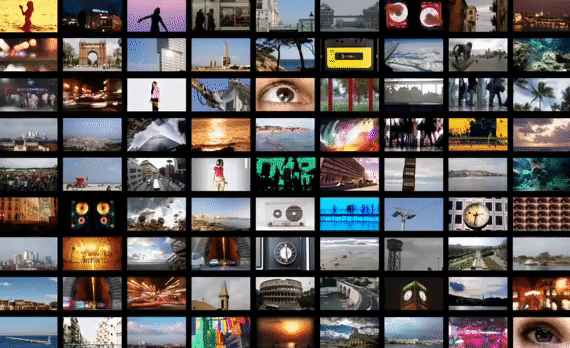
READ MORE: The Five-Step Transformation to Cross-Platform Monetization (Imagine Communications)
While the shift towards streaming delivery is having an undeniable impact on linear broadcast ad revenue, Imagine Communications believes the decline is much less dramatic than headlines suggest.
The broadcast technology systems vendor predicts that by 2030 linear broadcast will still command between 40-50% share of ad revenue. Some analysts are even more bullish, projecting that by the end of the decade linear advertising will still take more than half the ad dollars in certain economies.
It is not dismissing OTT revenues or the rise of connected TV but advises broadcasters to take steps to enabling what it calls ‘true cross-platform monetization’.
The reasons Imagine thinks linear TV will remain a major plank of media campaigns is the age-old one that strong linear brands gives audiences “reassurance” that they will receive quality programming.
“The audience is fragmenting. Maybe linear is skewing older, OTT skewing younger. For a single campaign, you can optimize across those different platforms to find your audience, maximize your operational efficiencies and achieve your revenue goals.”
— Imagine Communications
“That same promise of quality content attracts top-tier advertisers; they know they can rely on linear television to deliver the most valuable audiences and the broadest reach to power their brands.”
OTT advertising, on the other hand, tends to be sold at arm’s length by demand-side platforms (DSP) that manage multiple inventories without ever really matching advertisers and content.
“This disconnect is a key reason why broadcast is still seen as the gold standard for television advertising,” Imagine says. “That said, the one advantage that OTT advertising has is how efficient the trading becomes due to end-to-end automation with minimal manual intervention required.”
Imagine argues that if cross-platform content distribution is the goal for most broadcasters and global media companies, then mass campaigns will not be able to achieve targets an efficient cross-platform monetization model.
CHARTING THE GLOBAL MARKETPLACE:
Big content spends, tapping emerging markets, and automated versioning: these are just a few of the strategies OTT companies are turning to in the fight for dominance in the global marketplace. Stay on top of the business trends and learn about the challenges streamers face with these hand-curated articles from the NAB Amplify archives:
- How To Secure the Next Billion+ Subscribers
- Think Globally: SVOD Success Means More Content, Foreign Content and Automated Versioning
- How Does OTT Gain Global Reach? Here’s Where to Start.
- Governments Draw Battlelines To Curb the US Domination of SVOD
- Streaming Content: I Do Not Think You Know What That Word Means
Its solution is to bring all advertising inventory, linear and nonlinear, together in a single point of sale, “treating it as a single audience for unified campaign planning.”
Pay-TV broadcasters Sky in the UK and Nine in Australia are already moving toward a converged selling approach, it says, “that combines the quality and brand safety of linear with the speed and precision targeting of digital on a single platform.”
To transition from spot-based to audience-based monetization the essential focus must be on the notion “that the audience is the inventory, rather than the spots.”
To elaborate what that means, Imagine has outlined a five-step guide to making the transformation.
This starts from decoupling programs, spots and audiences, followed by the optimization of linear inventory to find audience.
“The one advantage that OTT advertising has is how efficient the trading becomes due to end-to-end automation with minimal manual intervention required.”
— Imagine Communications
“This is the logical next step. Use all the research and tracking tools — at least once a day and ultimately in real time — to refine placement, making it more fluid. Know exactly how close you are to your audience commitments in volume, demographics and frequency, rather than rely on pure ratings-based audience predictions.”
Industry analyst Brett Sappington, who leads the video and entertainment research practice at global insights firm Interpret, chats about the evolution of streaming and its impact on the pay-TV model on the Light Reading podcast with senior editor Jeff Baumgartner.
“Before you would ever get to a subscriber floor, I think [the pay-TV industry] fundamentally has to change… to make the economics work,” Sappington comments. “We’re really looking at a pretty significant shift in how pay-TV works in the next few years just to make the economics work out.”
Listen to the full conversation in the audio player below:
Step three in Imagine’s guidance is to begin selling linear and VoD inventory together and then move away from DSPs by “filling VoD/OTT inventory with campaigns you have sold.”
All this should mean broadcasters can finally start optimizing across inventories to guarantee reach, volume and frequency goals.
“The audience is fragmenting. Maybe linear is skewing older, OTT skewing younger. For a single campaign, you can optimize across those different platforms to find your audience, maximize your operational efficiencies and achieve your revenue goals.”
CONNECTING WITH CONNECTED TV:
Currently one of the fastest-growing channels in advertising, Connected TV apps such as Roku, Amazon Fire Stick and Apple TV offer a highly effective way for brands to reach their target audience. Learn the basics and stay on top of the biggest trends in CTV with fresh insights hand-picked from the NAB Amplify archives:
- The Ever-Changing Scenery of the CTV Landscape
- TV is Not Dead. It’s Just Becoming Something Else.
- Converged TV Requires a Converged Ad Response
- Connected TV and the Consumer
- Connected TV Opens Up a Million Ad Possibilities
Imagine even suggests that, all being well, a broadcaster could consolidate operations for other broadcasters and media companies ― offering advertising management as a service.
“The five-step program is as much cultural change as technical transformation ― and that is always challenging. But without it, you will be in no position to build a strong business in the new, dynamic, multiplatform media environment. This journey of transformation is critical for the survival of our entire industry.”

